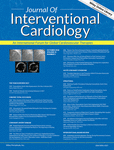Thrombus aspiration in late presenters with ST-elevation myocardial infarction: A single-center randomized trial
Abstract
Objectives
To examine whether routine thrombus aspiration (TA) is associated with improved myocardial salvage in patients with ST-elevation myocardial infarction (STEMI) presenting ≥12 h after onset of symptoms.
Background
TA is a recognized treatment option in patients with STEMI undergoing primary percutaneous coronary intervention (PPCI) especially in the setting of heavy thrombus burden. However, data on the role of TA in STEMI patients presenting late after onset of symptoms are limited.
Methods
In this single-center prospective randomized study, patients with subacute STEMI presenting ≥12 and ≤48 h after symptom onset were randomized to primary PCI with or without manual TA in a 1:1 ratio. The primary endpoint was the myocardial salvage index assessed with Single Photon Emission Computed Tomography (SPECT) on admission and 4 days later.
Results
A total of 60 patients underwent randomization. Baseline characteristics were comparable between groups. TA was associated with improved myocardial salvage index compared with control group (60.1 ± 11.1% vs 28.1 ± 21.3%; P = <0.001). Furthermore, TA was associated with improved post-procedural TIMI flow (2.9 ± 0.3 vs 2.5 ± 0.6; P = 0.003), myocardial blush grade (2.9 ± 0.3 vs 2.2 ± 0.8, P = <0.001), and reduction in left ventricular end-diastolic dimensions (50.4 ± 4.3 mm vs 54.4 ± 5.8 mm, P = 0.004) compared with the control group. Clinical outcomes at 30 days and 6 months were similar between both groups.
Conclusions
TA might be associated with improved reperfusion and myocardial salvage especially in STEMI patients presenting after 12 h from symptom onset who are likely to have a heavy thrombus burden.
CONFLICTS OF INTEREST
None.




